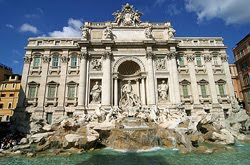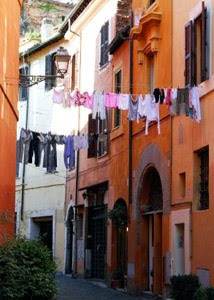 architectural beauty of the bridge or go grocery shopping for local produce. Gourmets, tourists, shoppers and locals frequent the Rialto area and it is a wonderful way to feel the pulse of the city.
architectural beauty of the bridge or go grocery shopping for local produce. Gourmets, tourists, shoppers and locals frequent the Rialto area and it is a wonderful way to feel the pulse of the city.Getting to the Rialto is easy and you can take the Vaporetto lines along the Grand Canal and then cross the Rialto Bridge to reach the markets. The Rialto markets have been the lifeline of Venice ever since 1097, with people visiting them for their daily fish, fruits, vegetables and other produce.
A visit to the Rialto markets is the best way to really understand this fascinating and romantic city. You will be able to spot fresh farm products being unloaded from the barges, food shoppers examining fish for freshness and quality, handcarts packed with vegetables and fruits being pushed around and many more fascinating market sights on your trip there.
I recommend an early morning visit to the Rialto markets. I found my before-breakfast visit quite rewarding because there was hardly any crowd around which allowed me to see the market at its best. The restaurant chefs and the stall owners were the only people around and the fruits, vegetables and fish stocked there were absolutely fresh. In addition to this, some of the stall owners had their music on and were singing along to Opera and Italian songs.
The Rialto market is the very heart of Venice and a walk along the Rialto Bridge in the early morning will grant you some fantastic views of the area. The crowds start pouring in after breakfast and then you can really view Venice at its busiest. The area is also home to San Giacomo, one of the most ancient of Venetian churches dating back to the eleventh century.
I purchased some great fruit for a picnic I was planning and enjoyed an espresso in a coffee shop before leaving the market.




